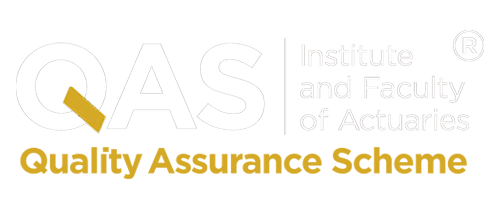Impact on European industrial powerhouses
The EU’s two main industrial centres, Germany and Italy, are rapidly losing their competitive edge following the loss of access to cheap Russian gas. The long-term result will be a weaker, smaller, more US-dependent EU economy. The US-EU sanctions were supposed to bring Russia’s economy to its knees but instead have hobbled the EU’s own economic prospects. Worst of all, the crisis in Germany, Europe’s largest economy, appears to be structural rather than cyclical, with Bloomberg recently warning that its days as an industrial superpower may be coming to an end.
Consequences of geopolitical crises
The rapid decline of Germany’s industrial economy over the past two years is just one example of how geopolitical crises such as war can trigger unforeseen – and in some cases, unforeseeable – economic consequences.
The strain on European economies
As the demands of war grow and interest rates rise, the fiscal health of many European economies, including Germany’s, is being pushed to the limit. Central banks’ gradual withdrawal of their quantitative easing (QE) programs, which kept government borrowing costs artificially low for over a decade, is imposing fresh constraints on public spending. German Finance Minister Christian Lindner has warned his own government that state finances are quickly growing out of hand. Bear in mind, German finances are in much better shape than those of many other EU economies.
The looming fiscal crisis in the US
In the US, a fiscal crisis is also looming after years of ballooning deficits. As interest rates have risen, so too have the interest payments the US government must pay on its debt load, which recently topped $34 trillion. The estimated yearly amount of interest payments crossed the $1 trillion threshold at the end of October, according to a recent analysis by Bloomberg. The government is also spending around $4 trillion a year on mandatory outlays (healthcare programs, social and income security programs, federal and civilian military retirement benefits, certain veteran programs and other programs) as well as almost $1 trillion a year on defence, more than the next ten countries combined.
Yet Washington still wants to increase its military spending. Savvy investors know what this means: the government will print even more money. Their inevitable response will be to demand an even higher interest rate, further accelerating the expansion of public debt. Rinse and repeat.
Global commodity prices and geopolitical showdowns
Another risk factor to watch out for is a sudden surge in global commodity prices. As we noted in our previous article, the rising hostilities in the Middle East are yet to cause a sharp rise in oil prices, but that doesn’t mean they won’t. As Fitch Ratings cautions, “the wars in the Middle East and Ukraine, upcoming elections in many countries and rising regulatory uncertainty for natural resources in some jurisdictions have renewed the focus on geopolitical and political risks for commodities markets.”
US-China tensions and supply chain strains
It is not just the prices of commodities that pose a risk. The world’s two largest economies, the US and China, are currently locked in a high-stakes showdown over nanochip development and production. While the US ratchets up sanctions in a (probably vain) attempt to prevent China from developing advanced smartphone chips, Beijing has blocked exports of gallium and germanium, which are both essential for making semiconductors. It has also banned the export of technology needed to extract and separate the rare earth materials that are critical for electric vehicle motors, medical devices and weaponry.
In other words, while Washington is trying to prevent Chinese companies from accessing the technology needed to develop their own advanced nanochips, Beijing is trying to cut off US and European companies from the raw materials needed to manufacture semiconductors. It is hard to see where this will all end, but one thing is clear: these two countervailing forces will heap yet more strain on global supply chains. And that will probably mean higher prices.
Geopolitical risks and global financial systems
Two more geopolitical risks worth keeping a close eye on are declining trust in the US-based global system, or rules-based order, and declining global demand for US treasures, both of which largely stem from the US-EU’s backfiring sanctions on Russia. These trends are likely to continue, especially if the EU carries through on its threat to confiscate the profits from frozen Russian assets in European banks and send them to Kiev to help with Ukraine’s war effort. Russia has already warned of “catastrophic consequences” for the banks and nations involved as well as the EU’s broader economy.
Challenges for corporate treasuries
This pervading climate of distrust is not good for the health of a global economy that has still not tamed runaway inflation. For corporate treasurers who ultimately want to maximise their liquidity while minimising the volatility of the assets they’re exposed to, conditions are getting tougher. Highly liquid, low-risk investments, while ideal in a stable, low-inflation environment, yield returns that are unlikely to keep up with, let alone outpace, inflation. Over the short-term, the loss of funds may seem minimal but over the mid-to-long-term it can become substantial – like slowly melting ice.
The evolving role of corporate treasuries
In light of the complex geopolitical landscape outlined above, it becomes evident that the economic ramifications extend far beyond immediate market fluctuations. Particularly for corporate treasuries, the impact of sustained inflation amidst these uncertainties presents a profound challenge. Traditionally seen as the financial backbone of a company, enabling it to support and fuel future business decisions and growth, corporate treasuries are now at risk of becoming a drain on business resources rather than a source of strength.
Adapting to new economic realities
The role of a corporate treasury is multifaceted, encompassing the management of a company's liquidity to ensure that it has the cash flow necessary to meet its obligations and pursue growth opportunities. In a stable or low-inflation environment, this involves investing in highly liquid, low-risk assets that provide a predictable return. However, in a world where inflation is rampant and unpredictable due to the aforementioned geopolitical risks, these traditionally safe investments lose their appeal. Their returns often fail to keep pace with inflation, which means that in real terms, the value of the assets managed by corporate treasuries is eroding over time. This erosion is not just a paper loss but translates into a tangible drain on the resources available to the company for investment in new technologies, market expansion, and other growth initiatives.
Strategic implications and the path forward
Moreover, the increased cost of borrowing due to rising interest rates compounds the challenge, as it raises the cost of financing and further squeezes corporate budgets. Companies may find themselves in a vicious cycle where the cost of maintaining liquidity eats into their profit margins, reducing their ability to invest in future growth and, in some cases, forcing them to cut back on essential services and products.
The strategic implications for corporate treasuries in this new economic reality are significant. Treasurers will need to adopt more sophisticated risk management strategies, diversifying investments to include assets that can hedge against inflation and exploring alternative financing options. They will also need to be more agile, responding quickly to changes in the geopolitical landscape that could impact currency exchange rates, supply chains, and global markets.
Conclusion: Navigating through uncertainty
In conclusion, as the world grapples with escalating geopolitical tensions and the economic fallout that follows, the role of corporate treasuries is becoming increasingly complex. No longer can they rely on traditional strategies in a world that is anything but traditional. The imperative now is for these financial nerve centres to innovate and adapt, ensuring they can continue to support and strengthen their businesses in the face of sustained inflation and other challenges that lie ahead. The ability of a company to navigate these turbulent waters may well depend on the agility and foresight of its treasury operations.













